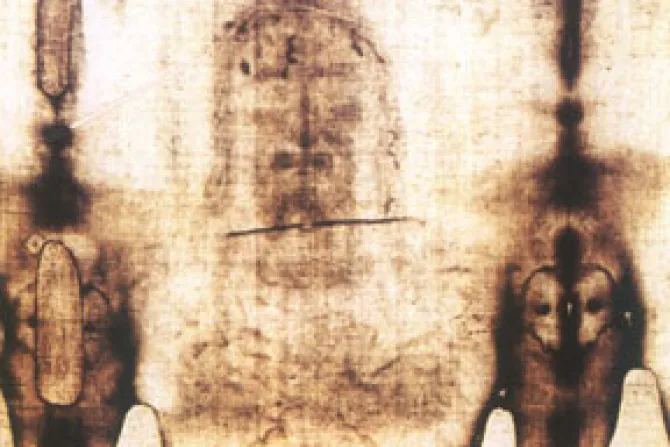Vatican City, Apr 6, 2009 / 23:41 pm
A researcher in the Vatican Secret Archives claims to have filled a gap in the known history of the Shroud of Turin, saying that rediscovered records of the Knights Templar trials show the Shroud had been in the possession of the order before it was suppressed.
The Shroud had disappeared in the sack of Constantinople in 1204 during the Fourth Crusade and reports of it do not surface again until 1353, Researcher Barbara Frale said in L’Osservatore Romano. The Shroud was then displayed in a church at Lirey in France by descendants of Geoffroy de Charney, a Templar Knight burned at the stake with the last head of the order, Jacques de Molay.
According to L'Osservatore, Frale has uncovered new evidence concerning the Shroud in the testimony surrounding the Knights Templar, a crusading order.
Founded at the time of the First Crusade in the eleventh century, the Knights Templar protected Christians making the pilgrimage to Jerusalem. They took their name from the Temple of Jerusalem, near which they were first stationed.
After the crusaders lost the Holy Land with the fall of the city of Acre in 1291, support for them weakened. Accused of both heresy and engaging in corrupt and sexually immoral secret ceremonies, the order’s leaders were arrested by King Philip IV of France. The king pressured Pope Clement V to dissolve the Knights Templar, which he did in 1307.
Frale reported that a trial document recounts the testimony of Arnaut Sabbatier, a young Frenchman who entered the order in 1287. He testified that as part of his initiation he was taken to “a secret place to which only the brothers of the Temple had access.” He was shown “a long linen cloth on which was impressed the figure of a man” and instructed to venerate the image by kissing its feet three times.
Frale said that the Knights Templar had been accused of worshiping idols, in particular a “bearded figure.”
According to Frale, the Knights took possession of the Shroud to rescue it from heretical groups such as the Cathars.
In 2003 Frale rediscovered her trial document source, known as the Chinon Parchment, after realizing it had been wrongly cataloged in the Vatican Library.
Radiocarbon dating tests conducted on the Shroud in 1988 indicated it was a medieval forgery. However, the tests’ accuracy has been challenged on the grounds the sample was taken from an area of the Shroud mended after a medieval fire.
The Catholic Church has not taken a position on the authenticity of the Shroud.


